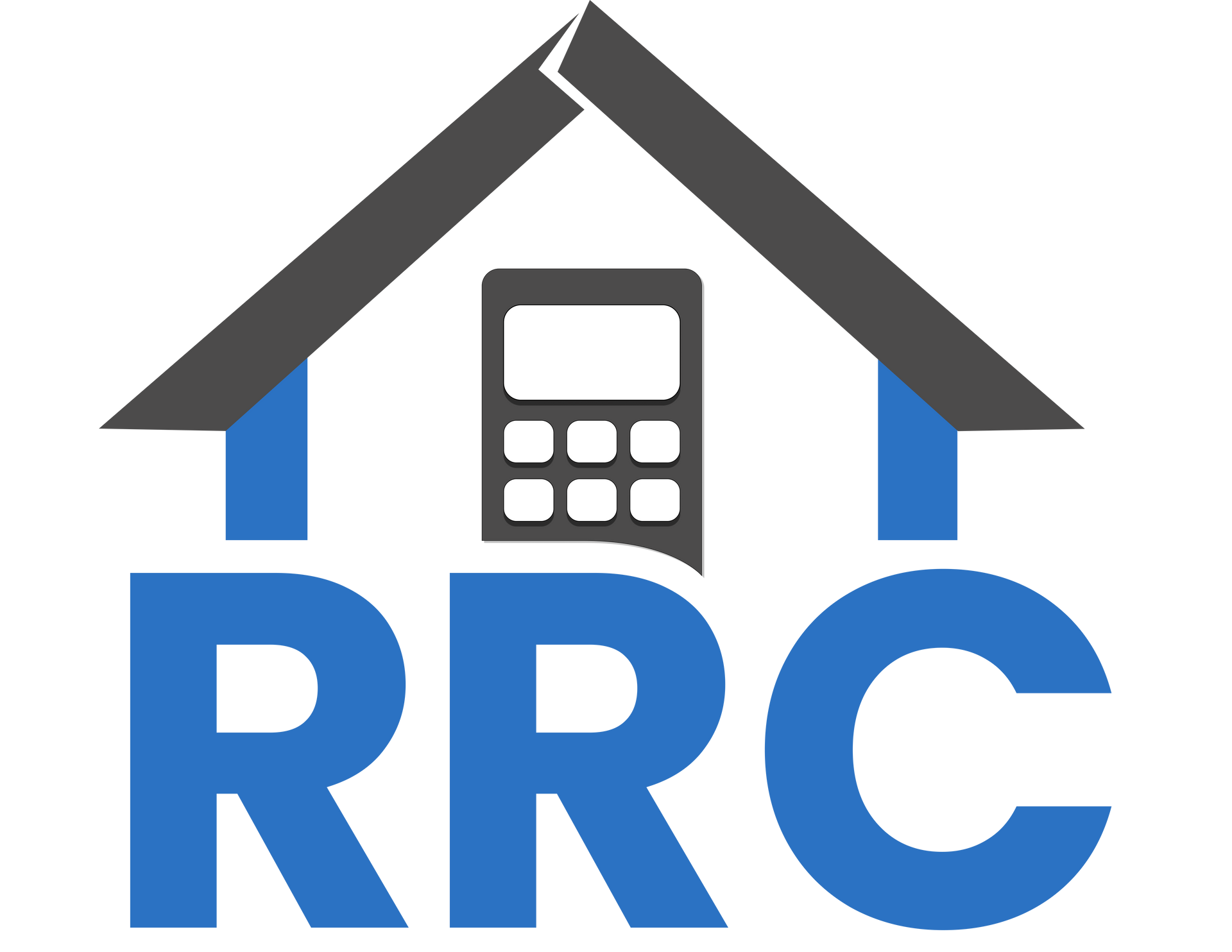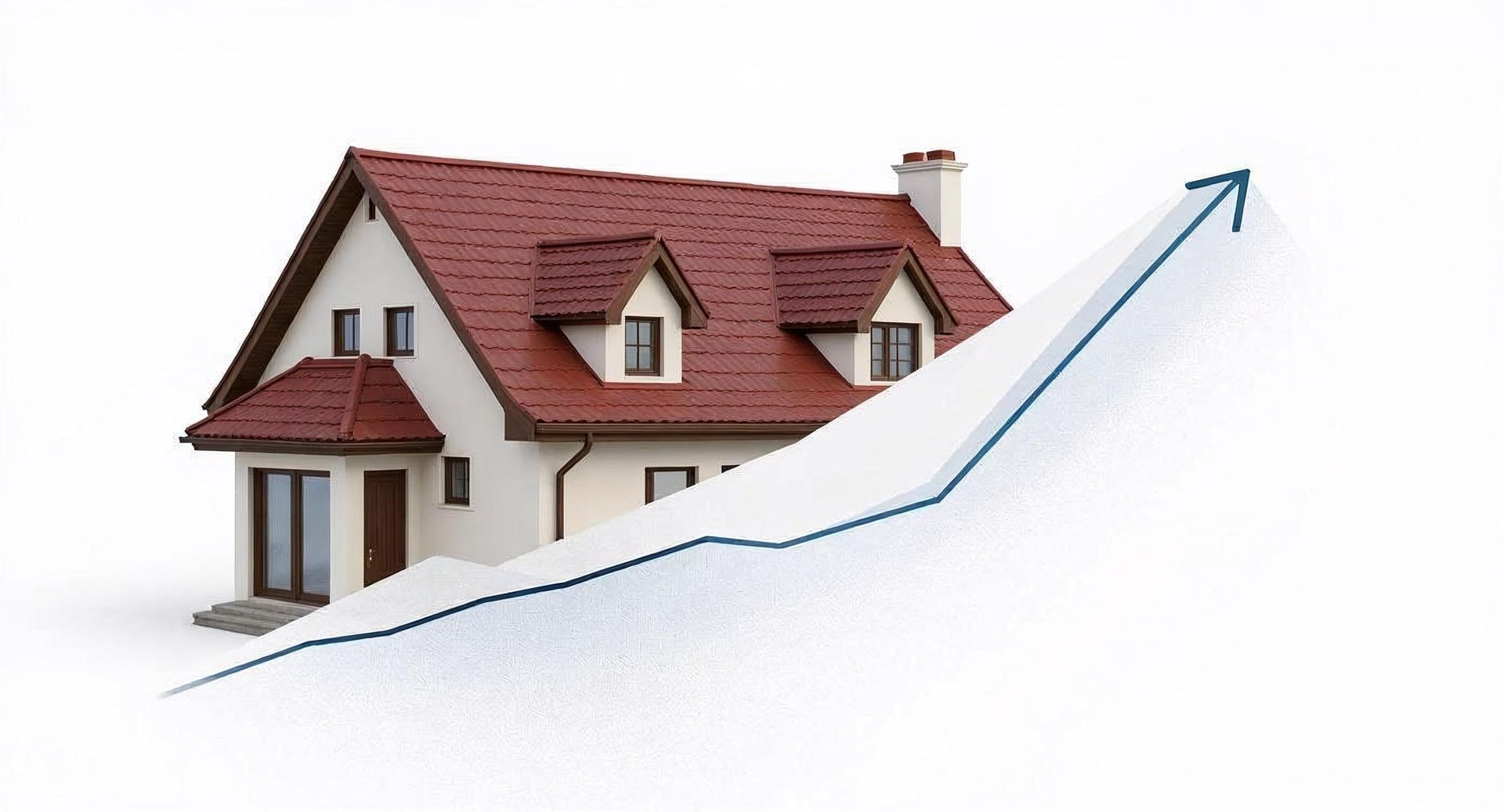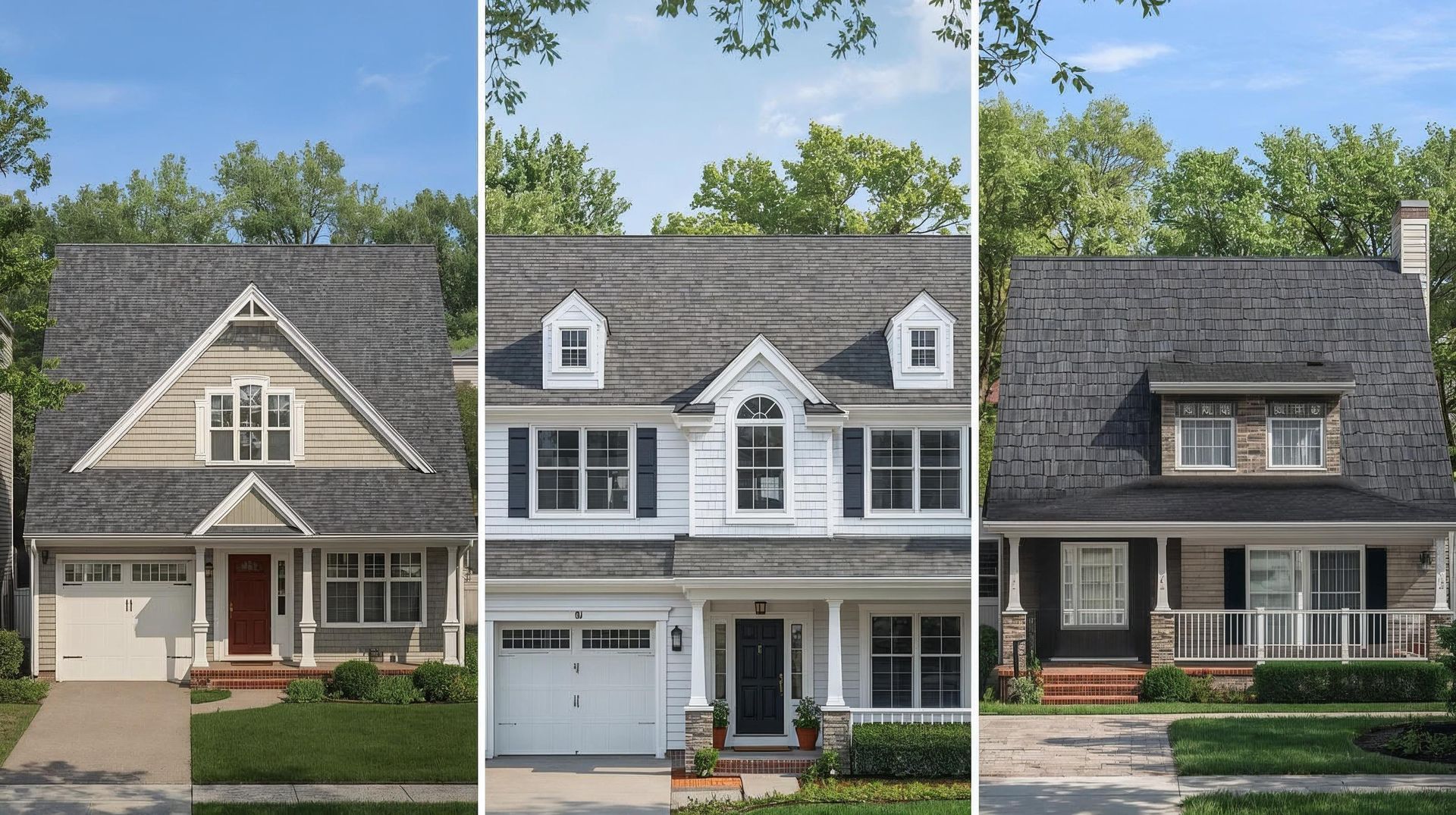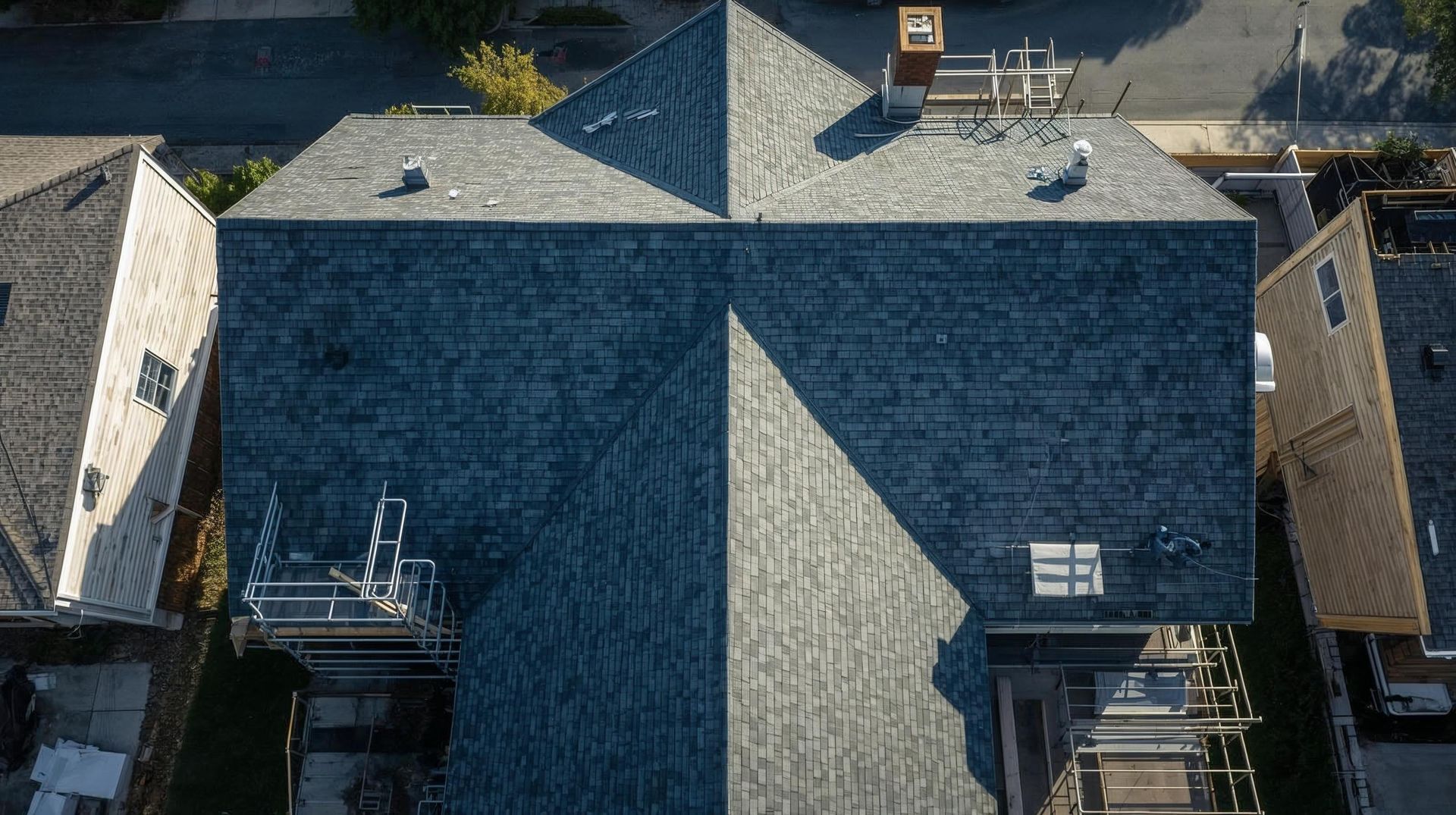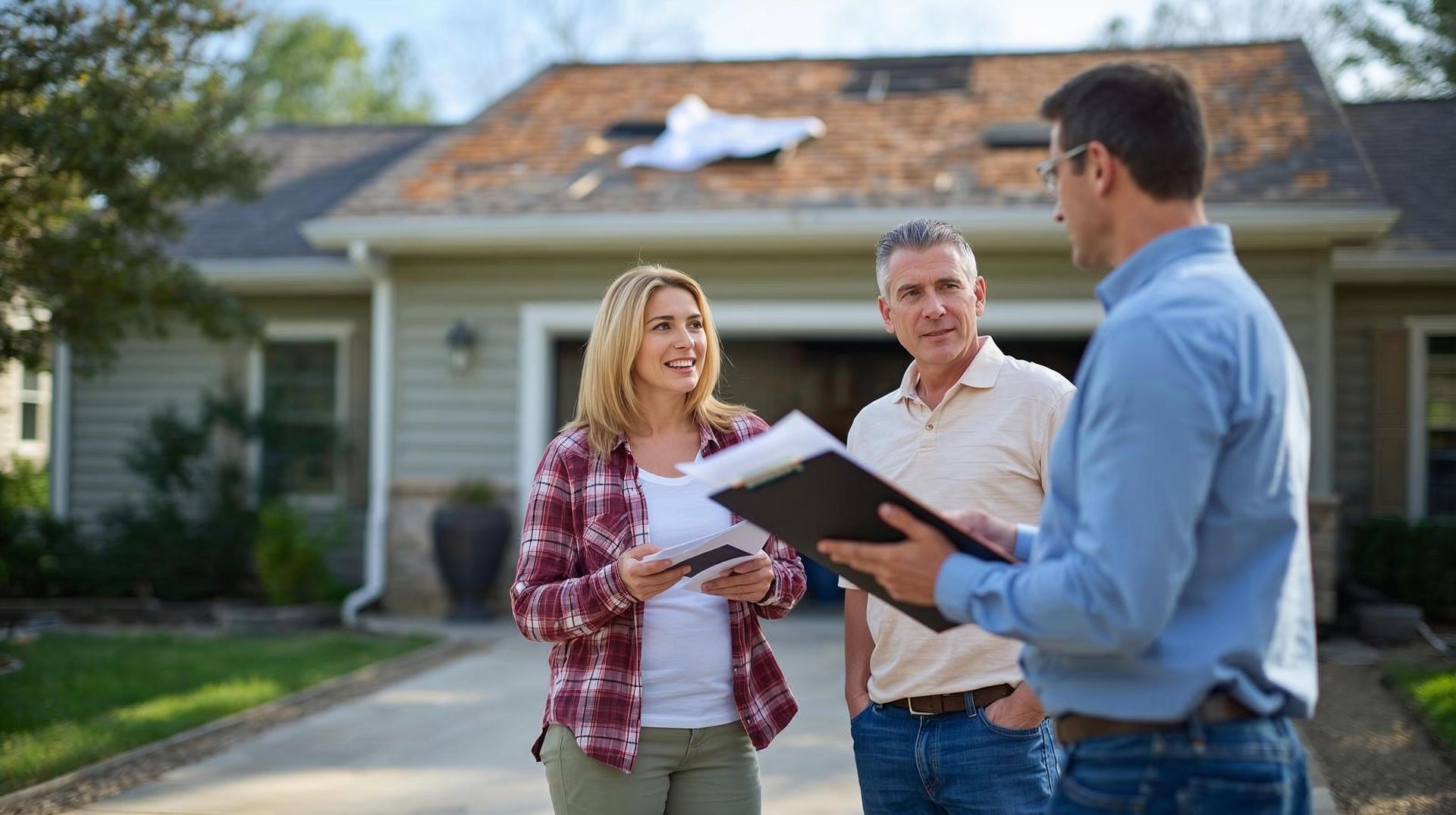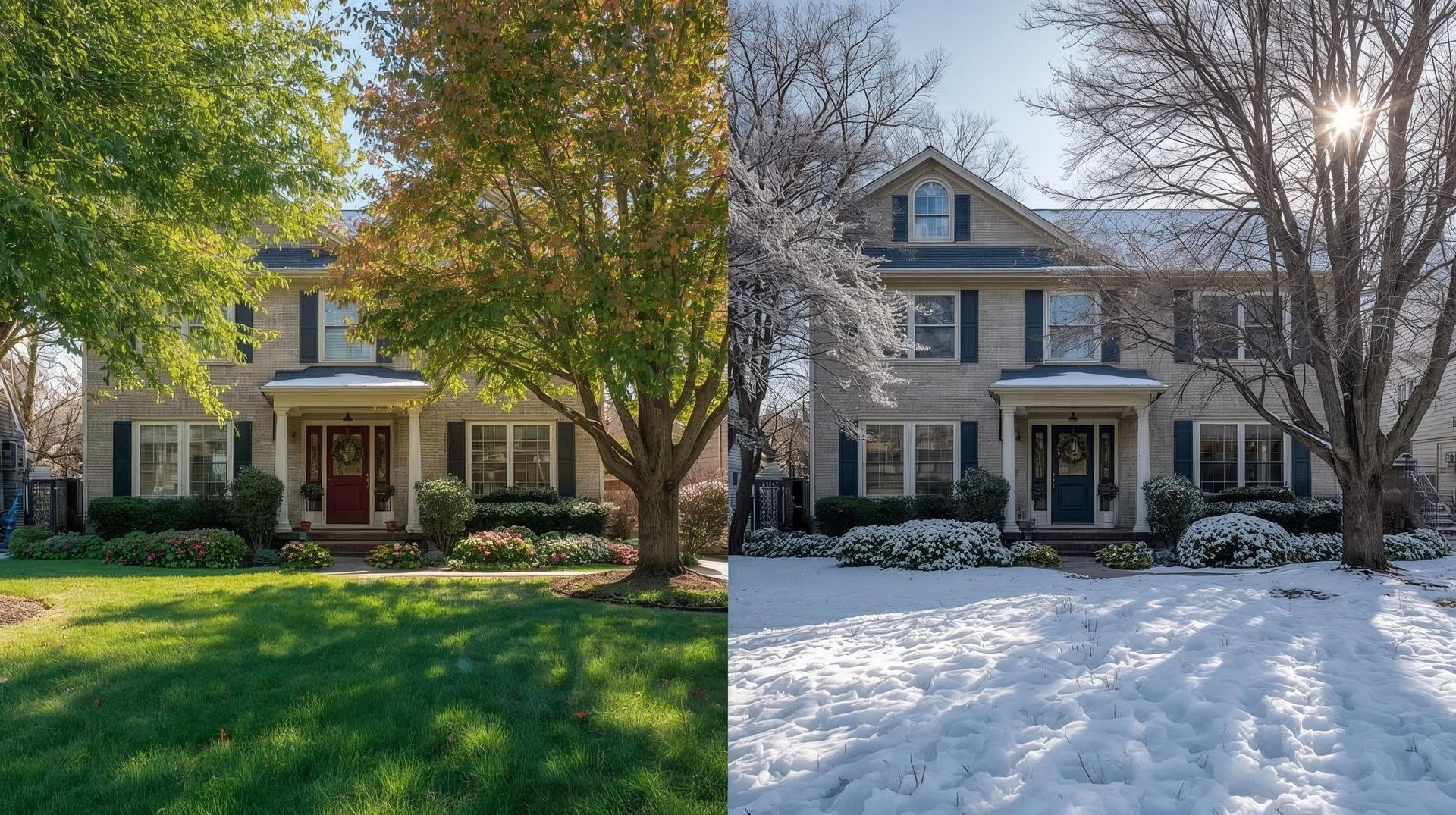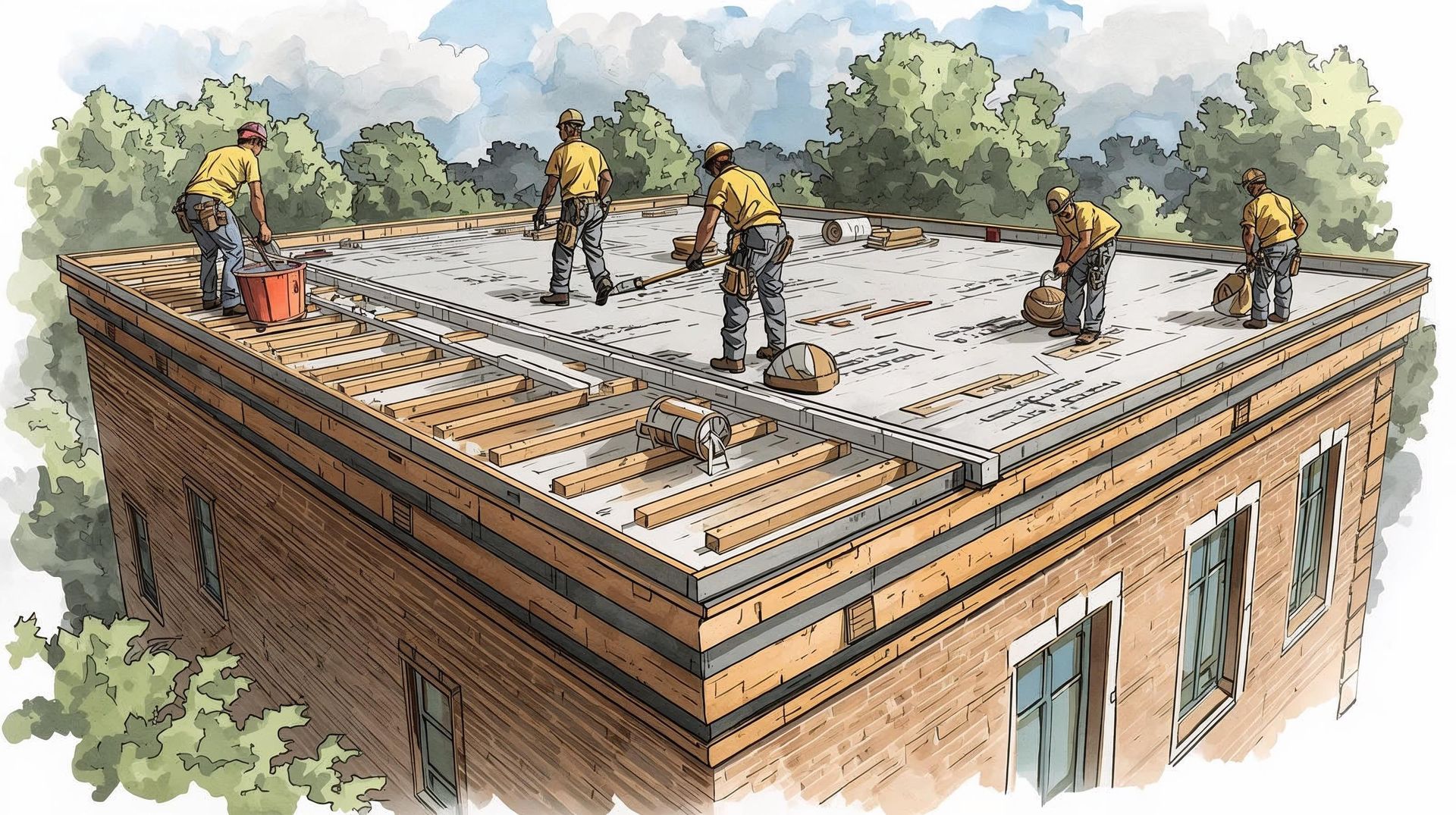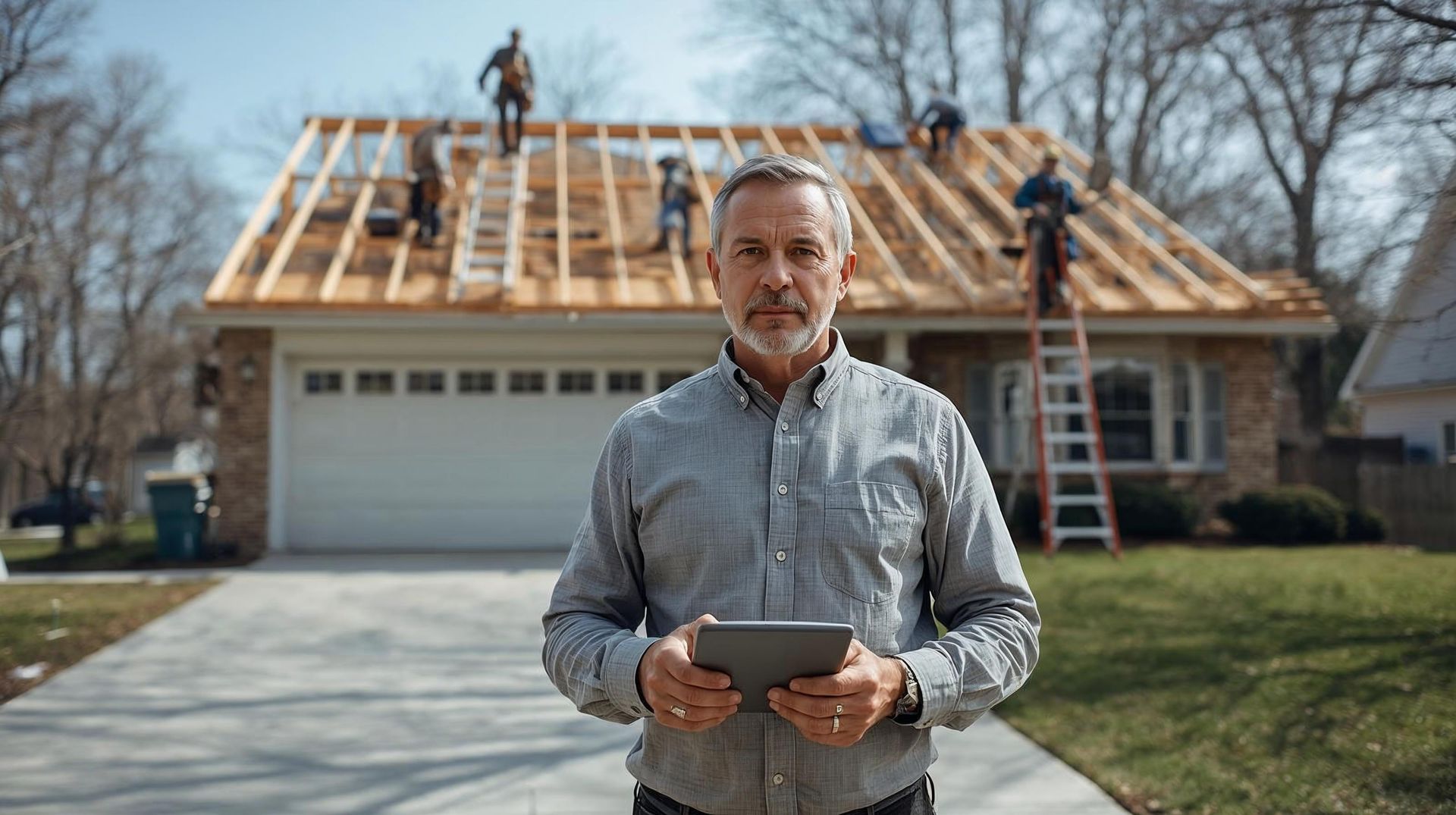What Is a Roofing Square? Explaining Key Terms for Homeowners
- One roofing square = 100 square feet.
- It’s the standard unit of measurement every roofer and supplier uses.
- Understanding squares helps you compare roofing estimates, avoid confusion, and budget better.
- Roof pitch, design, and other factors affect the total number of squares your roof requires.
How Many Squares Does Your Roof Really Have?
When contractors prepare roofing estimates, they often don’t talk about total square footage. Instead, they discuss how many roofing squares are needed.
Example: If your roof covers 2,000 square feet, instead of saying “your roof’s size is 2,000 square feet,” experienced roofers will simplify it to “20 squares”.
This matters because the final number of squares determines:
- How much material (like shingles and underlayment) you’ll need
- The labor costs per square foot
- The rough estimate and eventual final cost of your roof replacement
Even a flat roof uses the same calculation, though steep roofs with dormers, valleys, and complex designs usually require more materials.
This industry shorthand makes it much easier to calculate how much material is needed, how long the roofing job might take, and the rough estimate of costs. Knowing the roof’s square footage allows both homeowners and contractors to be on the same page before finalizing the project.
What is a Roofing Square?
A roofing square is simply 100 square feet of roof. It doesn’t mean a physical square shape; it’s just a convenient unit to measure the total roof area.
For example, instead of saying a roof is 2,300 square feet, contractors say it’s 23 squares.
It’s like buying tiles, carpet, or siding by the square yard or boxed unit. You don’t count every tile, but you measure the length and width of the area and calculate how many bundles or boxes are needed. The same principle applies to roofing.
Why Contractors Use Roofing Squares
Roofing squares aren’t just jargon; they’re a practical tool that helps both homeowners and contractors.
- Clear Roofing Estimates: Knowing how many squares ensures the correct amount of materials is ordered, and the costs per square are transparent.
- Comparing Companies: When multiple roofing companies provide bids, you can check if their estimates match your home’s square footage.
- Budgeting Better: Since a new roof is a major investment, understanding squares helps predict the final cost more accurately.
- Material Planning: Because manufacturers package shingles by the square, you’ll know the number of bundles or shingles needed for your project. Typically, three bundles of shingles = one square.
- Consistency: Using squares creates uniformity across the roofing industry, making it easier to compare projects regardless of the roof’s size or design.
- Communication: Saying “this is a 35-square roofing job” immediately tells suppliers and roofers the total square footage without confusion.
How Roofing Squares Are Calculated
The process isn't just about measuring your home's length and width. Roofers consider:
- Roof Size- The overall square footage of your roof.
- Roof Pitch- Steeper roofs require more materials.
- Roof Complexity- Features like dormers, valleys, or skylights increase the square count.
- Old Roof Condition- If your old roof has damage, repairs or replacement of the roof deck increases costs.
Example: A 1,500 square foot home with a simple roof design might require about 15 squares. But with a steep pitch and valleys, the same home may need closer to 18-20 squares of roofing material.
Roofing Terms Every Homeowner Should Know
- Roofing Square: 100 square feet of roof surface.
- Roof Pitch: The slope or steepness of your roof.
- Roof Deck: The wooden base your shingles attach to.
- Underlayment: A Protective layer installed between your roof deck and shingles/tiles.
- Asphalt shingles: The most common roofing material in the U.S.
- Architectural shingles: Thicker, more durable than standard 3-tab shingles.
- Bundles of shingles: Usually, 3 bundles = 1 roofing square.
- Ridges: The highest horizontal line on your roof where two sloping planes meet.
- Valleys: The low point where two roof slopes meet, creating a channel that directs rainwater and snowmelt down to the gutters.
- Flashing: A Thin piece of metal (aluminum, steel, or copper) installed around roof features like chimneys, skylights, vents, and valleys. It seals gaps and prevents water from seeping into your roof structure.
- Tar Sealant: Material applied to secure roof shingles against wind and water.
Understanding these terms makes discussing your roof installation process less intimidating and helps avoid surprises.
Why Roofing Squares Matter for Homeowners
For many homeowners, replacing the roof is one of the biggest home improvement projects they'll ever face. That's why it's important to understand the language of contractors.
Let's help you understand why:
- For clear communication, because when a contractor says your roof is "25 squares", you know exactly what it means, i.e., 2,500 square feet. This ensures everyone is on the same page.
- For estimating both labor and material needs.
- For better comparison between contractors and their estimates, so you can catch potential mistakes or inflated numbers.
- For material planning, since most of the roofing materials are sold by the square. This helps you track exactly what's being ordered and installed.
- To avoid future inconvenience and be in control.
Take control of your roof: use our DIY Roof Inspection Checklist to spot issues before scheduling a roofing job.
How Roofing Squares Affect Costs
The number of squares your home requires impacts labor costs, material costs, and other factors. Let's check them out one by one.
Material Costs
- Roofing materials are sold by the square. For example, a bundle of asphalt shingles typically covers 1/3 of a square, meaning you need 3 bundles per square.
- Metal roof, slate shingles, or luxury shingles often have a higher per-square cost compared to traditional shingles.
Labor Costs
- The more squares your roof has, the more time and manpower it takes to complete.
- The pitch and complexity (ridges, valleys, or multiple levels) can increase the labor even if the roof's square footage remains the same.
Waste Factor
- Contractors usually add 10-15% extra materials per square to account for cuts, overlaps, and waste. For a 25-square roof, that's 2-4 extra squares of shingles.
Installation Costs
- Steeper roofs require more safety equipment and time, which increases labor costs per square.
- Specialty materials like standing seam metal roofs or slate shingles involve specialized installation, which adds to the price.
Other factors
- Climate, siding condition, roof age, and several factors can increase the final cost.
In short, the number of squares your home requires is the single biggest factor that shapes both labor and material costs, making it essential to understand before you start any roofing project.
Not sure which materials fit your budget? Compare different roofing materials and their costs to make the right choice.
Interactive Roof Cost Calculator
Curious how roofing squares affect your budget? Here’s how a calculator helps homeowners:
- Enter your home’s square footage.
- Select your roofing material (asphalt, metal, slate, etc.).
- Add roof age, pitch, and local weather.
- Get a rough estimate comparing repair vs. replacement.
Using a calculator helps you advance plan, compare estimates from different roofing companies, and budget for home improvement projects more effectively.
Estimate your roofing costs in minutes with our free, easy-to-use roofing calculator.
Comparison Table of Roofing Terms
Homeowners don't need to become roofing experts, but knowing key terms can make your roofing projects less stressful. Use this table as your go-to cheat sheet.
| Term | Meaning | Why it matters |
|---|---|---|
| Roofing Square | 100 square feet of roof area | Basis for estimates & material orders |
| Underlayment | A protective layer beneath shingles | Prevents leaks & water damage |
| Flashing | Metal strips around edges, valleys | Stop water infiltration |
| Ridges & Valleys | High (ridges) and low (valleys) points of the roof | Affect drainage and roof design |
| Roof Deck | Structural base of the roof | Supports shingles & underlayment |
Take this table as your foundation to compare estimates and plan more easily.
Tips Before Getting Your Roof Replaced
Before you move forward with your roofing project, keep these tips in mind:
- Check your roof's age- Most asphalt shingle roofs last 20-25 years; if yours is near that age, replacement is likely needed.
- Inspect for damage- Look for missing shingles, leaks, or soft in the roof deck.
- Get multiple quotes- Compare roofing companies; not just on cost, but also on materials and warranties.
- Advanced planning- Roofing projects depend on weather, contractor availability, and materials. Schedule early to avoid delays.
- Ask about materials- Understand the pros and cons of roofing options before committing.
- Review warranties- Ask both the contractor and manufacturer about warranty coverage for your new roof.
Know your numbers first: use our free Roof Cost Calculator to determine materials, squares, and costs.
Conclusion
Knowing what a roofing square is may seem like a small detail, but it makes a huge difference when planning to get your roof replaced.
It helps you:
- Understand roofing estimates
- Communicate with contractors
- Compare roofing jobs
- Accurately determine how many shingles and bundles are needed
From replacing an old roof to installing a new one or preparing for future upkeep, grasping this measurement and its influence on materials, labor costs, and your budget ensures a smoother, more cost-efficient project.
From choosing roofing materials to planning your budget, we’re here to help every step of the way. Contact us today.
How many square feet are in a roofing square?
One roofing square = 100 square feet.
How many bundles of shingles are in a square?
Describe the item or answer the question so that site visitors who are interested get more information. You can emphasize this text with bullets, italics or bold, and add links.Do all roofing materials use squares?
Yes, from Asphalt shingles to slate roofs and metal, squares are the standard unit.
Can I measure roofing squares myself?
You can estimate, but a professional inspection ensures accuracy, especially for complex roofs.
Why does the roofing pitch matter when calculating squares?
Steeper pitches increase the surface area, resulting in more roofing squares and higher costs.
